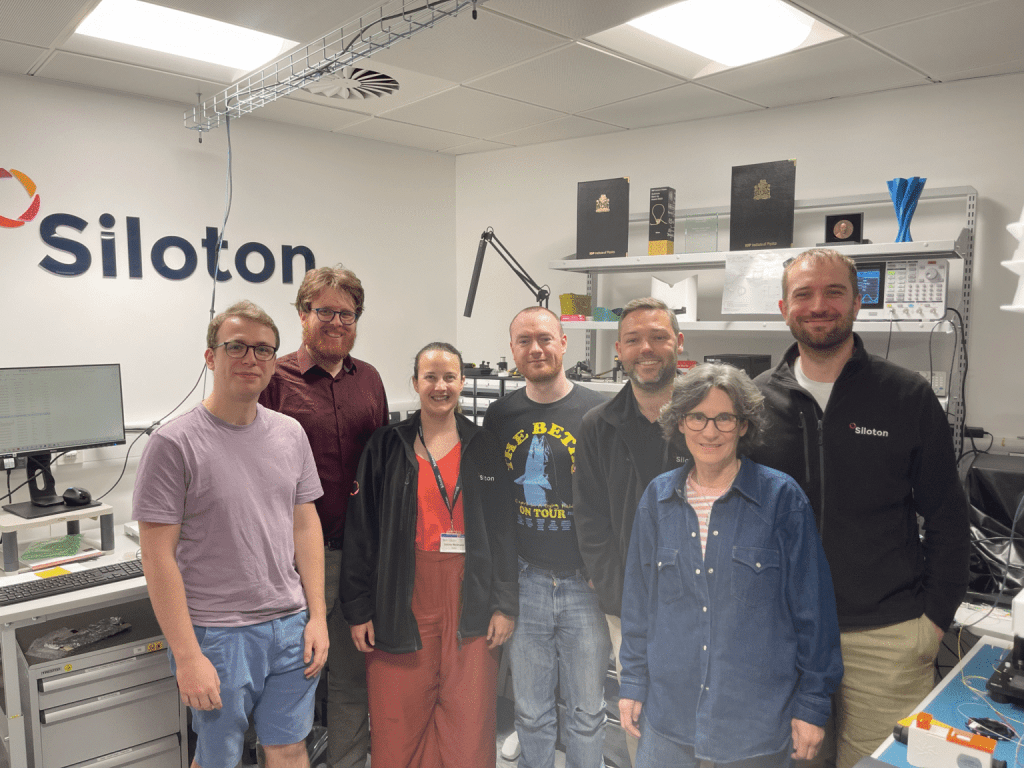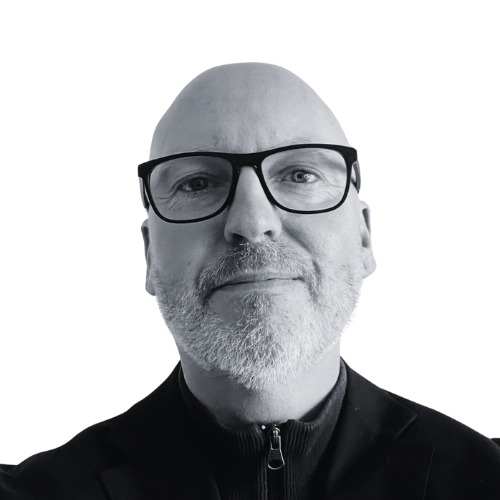Materials
Advanced materials: 2025’s breakthrough year and what comes next in 2026
Reading time: 5 mins
Bristol health tech business pivots to change how millions could monitor sight loss
After five years of building, bootstrapping, and bending the limits of what photonics can do, Bristol-based start-up Siloton has successfully imaged a patient’s eye using a single photonic chip. It’s a world first.
For Cathy Mansfield-Smith, who was the first patient to trial Siloton’s technology, this was a significant moment. Mansfield-Smith suffers from age-related macular degeneration (AMD) and lives remotely. “Any opportunity to maintain the quality of care I receive while making fewer trips to hospital would be a game-changer,” she said.
The company’s first patient trials (completed this month) could pave the way for home and community-based diagnosis of serious eye conditions. The device is small and fast, and the company is now looking, through clinical trials, to prove it is accurate enough to detect the point at which treatment becomes necessary. That means fewer injections into the eye, fewer unnecessary hospital visits, and earlier intervention for millions.

But it might never have happened. According to Dr Alasdair Price, CEO and co-founder of Siloton, “the chip was never designed to image people, never mind patients. But once it worked on artificial eyes, we thought, let’s try it on a human.”
The photonics chip, called Akepa, condenses a tabletop’s worth of fragile OCT scanning equipment into something that fits in the hands. Crucially, it doesn’t need the chin rest or operator precision that traditional systems rely on. Patients simply hold the device up to their face, and the image is captured automatically, and more accurately.
“We had a few patients in with varying levels of disease,” said Price. “The images were really consistent. With the binocular system, you get the same image again and again on every frame.”
That consistency matters. Missed imaging can delay diagnosis, particularly for patients with AMD, which affects more than 700,000 people in the UK. In one case during the trial, a patient revealed they had lost sight due to delayed hospital appointments, an outcome Siloton is determined to help prevent.

The breakthrough is even more remarkable considering the technology’s origins. Price was originally working on quantum communication chips at the University of Bristol, developing systems to send secure messages using single photons. But during his PhD, he began to wonder if the same technology could be used to capture signals, not just send them?
“I started looking for problems instead of pushing a solution,” he said. “I spoke to an ophthalmologist at Bristol Royal Infirmary and asked for her top five problems with eye scanners. Four of them were things we already thought we could solve.”
That conversation sparked the company’s pivot and its founding, as Siloton wasn’t a university spinout with ready-made IP.
“We ended up building everything from scratch,” said Price. “We’re a start-up, proper.”
Like many deep tech ventures, Siloton began with more ideas than money.
“We could put in a thousand pounds each. That was it,” Price said. A friendly chip foundry helped with early fabrication, and a patent attorney backed them on a discount. “We had to make a lot of friends very quickly.”
That resourcefulness has paid off. Siloton has raised £1.7 million to date and is now seeking another £4 million to build a second-generation chip, improve image quality, and push the device through clinical trials. If all goes to plan, it could be market-ready in under three years.
“We’ve already done the hard bit. We’ve imaged patients,” said Price. “Now it’s about productisation and getting through formal regulation.”

To support that journey, Siloton is also selling development kits to other sectors, such as otology, veterinary medicine, and dermatology. These are all industries where OCT scanning has clear potential. “This is a platform,” Price said. “We’re focused on ophthalmology, but there’s a lot this technology can unlock.”
Regulatory approval is being pursued in parallel through the UK’s MHRA and the US FDA. While the company’s long-term ambition is to serve the NHS, it’s realistic about where traction may come first.
“It’s not the regulation or the trials, it’s the procurement,” said Price. “Any company that says, ‘We’ll start off in the NHS,’ is not going to survive.”
In the US, reimbursement routes are clearer and the rural healthcare market presents a strong use case for portable devices. But there’s a timing advantage in the UK. Siloton’s technology aligns with the government’s quantum strategy, specifically, Mission 3, which calls for quantum sensing devices to be deployed in the NHS by 2030.
“If we can deliver this within that timeframe – and we think we can – we’ll be ready with a working product at just the right moment,” said Price.
In the meantime, for patients like Cathy Mansfield-Smith, it’s already more than theory – it’s the start of something tangible. An eye on the future, powered by a chip that was never supposed to work on people, but did.

Working as a technology journalist and writer since 1989, Marc has written for a wide range of titles on technology, business, education, politics and sustainability, with work appearing in The Guardian, The Register, New Statesman, Computer Weekly and many more.
Quantum
Reading time: 10 mins
Quantum
Reading time: 10 mins
Quantum
Reading time: 11 mins
Robotics
Reading time: 1 mins
Quantum
Reading time: 3 mins